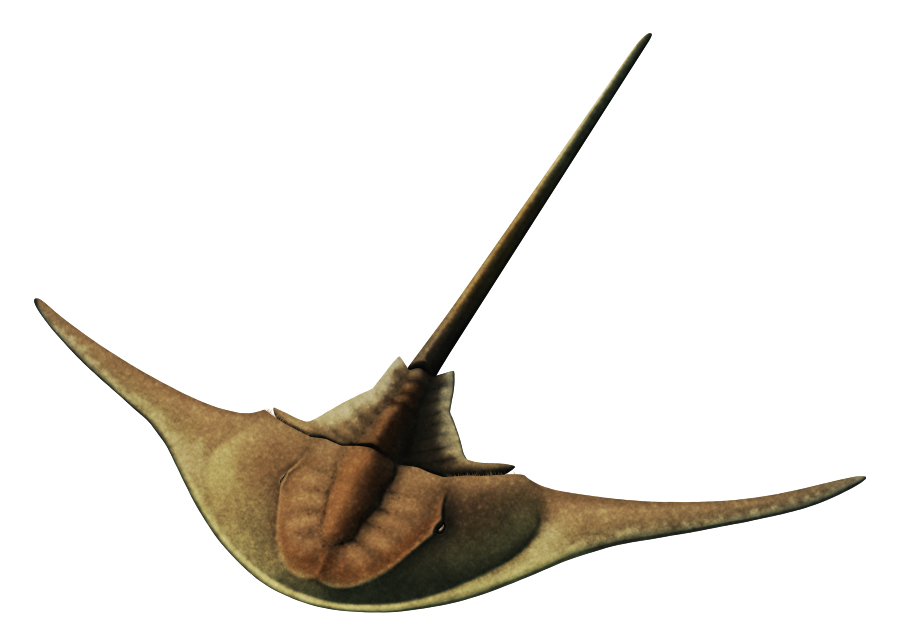Horseshoe crabs are famous examples of “living fossils“, having changed their external appearance very little over hundreds of millions of years. But some fossil species were much more varied in shape than their morphologically conservative modern relatives, such as Austrolimulus fletcheri here.
Living in freshwater environments in what is now New South Wales, Australia, during the Middle Triassic (~247-242 million years ago), Austrolimulus had incredibly long spines on each side of its head, reaching a span of around 18cm (7″) – wider than its total body length!
The function of these spines is unclear, but they may have acted like a hydrofoil in fast-moving currents, or they may have served a defensive purpose by making Austrolimulus‘ carapace too wide and unwieldy for some predators to deal with.

